Submitted by WA Contents
AW² completes resort with tent-like rooms for Banyan Tree AlUla in Saudi Arabia's desert
Saudi Arabia Architecture News - Nov 03, 2022 - 15:42 5934 views
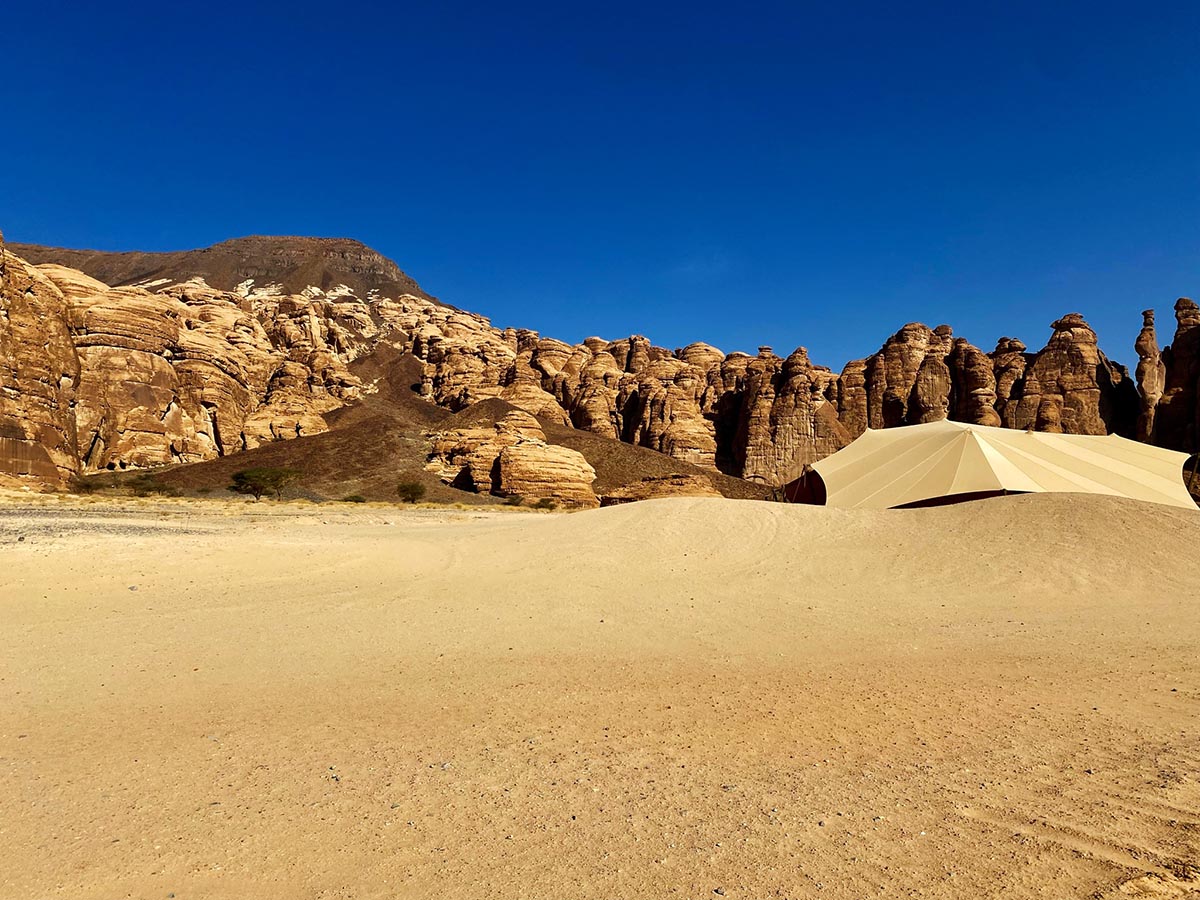
Paris-based international architecture and interiors studio AW² has designed a resort with tent-like suites in the Ashar Valley of Saudi Arabia.
Named Banyan Tree AlUla, the resort, consisting of 47 new tented suites ranging in size from one to three bedrooms, is located 15km from the Kingdom’s first UNESCO World Heritage Site, Hegra.
The project was appointed by the Royal Commission for AlUla (RCU) in partnership with the French Agency for AlUla Development (AFALULA).
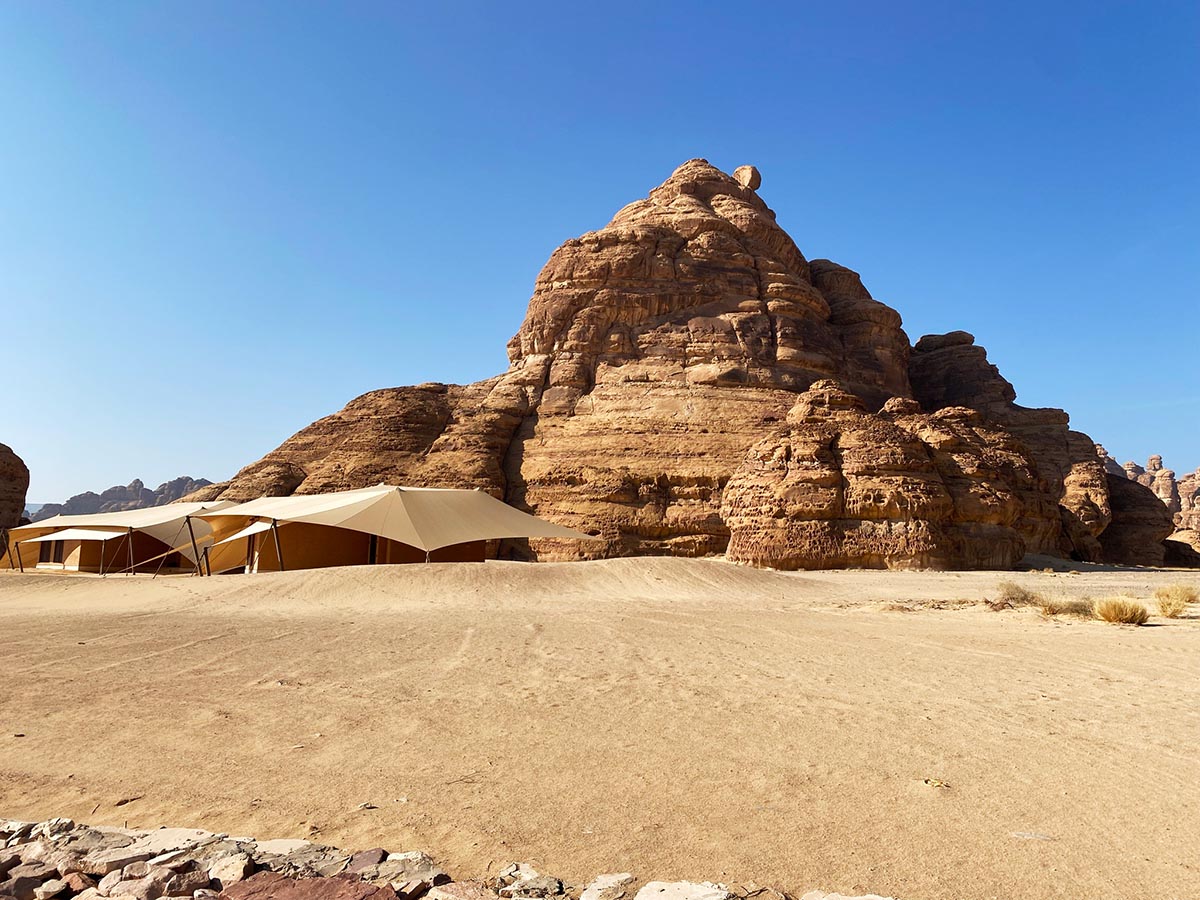
The program of the resort includes a 5-star hotel – 47 tented suites, 2 reception pavilions, 2 restaurants, spa with rock pool, common areas services.
Guided by the Strategic Master planning Guidelines for Alula and the Saudi Vision 2030, AW²’s design scheme integrates and responds to Saudi Arabia’s ambitions for the future as well as the resort’s completely unique desert setting amid rock formations and ancient heritage sites.
Aiming to prioritize the preservation of natural beauty and the rich heritage of the site, the project is also supporting the nation’s long-term touristic, cultural, and economic goals for the region.
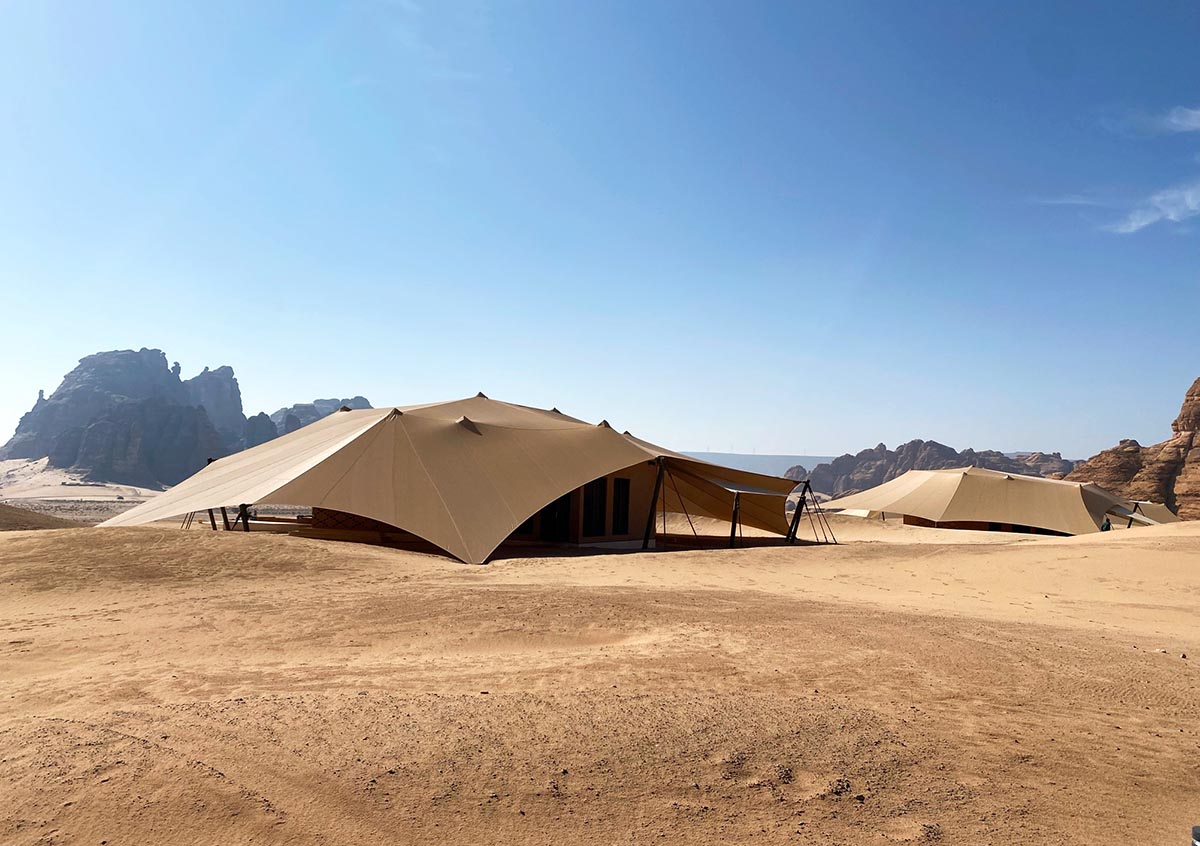
The studio conceived the scheme as an ensemble of sustainable tent-like structures, bringing a light touch, protecting the AlUla desert.
The public areas include two gourmet restaurants, as well as a luxury spa, while the signature swimming pool sits in a natural crevice in the rocks, reminiscent of the Wadis which appears at the foot of the cliffs during rain spells.
The studio has adopted an environmental-friendly approach, and the concept of "light touch" intends to blend the resort seamlessly with the natural scenery of the Ashar valley.

A simple platform makes up each suite with a solid structure evoking the neighbouring rocks. The studio used various sand-coloured canvases to create natural ventilation between the roof and the tent, as well as providing sun protection.
Soft roof lines are preferred in the three-tiered design to blend the architecture into the existing landscape.
Various sand coloured canvas and terracotta renders were carefully chosen to blend with its surrounding, the architecture and the landscape complement each other.
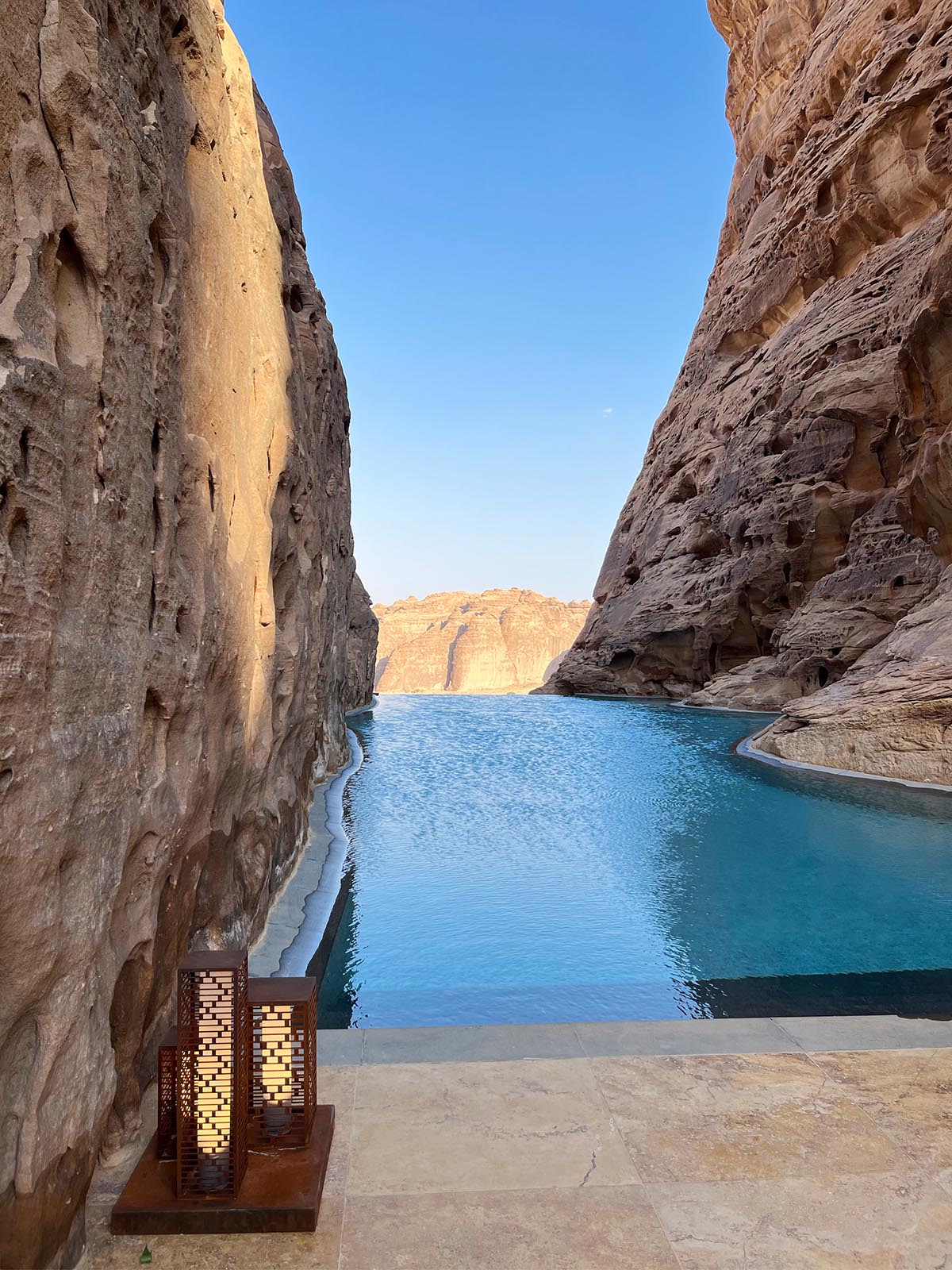
The studio, led by Stéphanie Ledoux and Reda Amalou, formed spa façades by using compacted sand, with the variation of horizontal coloured sand lines evoking with the rock formations in the background.
"Our architecture responds to the fragility of the Ashar site and aims not only to restore but also to protect it from future harm by consciously addressing the balance of Man and Nature," said Reda Amalou & Stéphanie Ledoux, Partners at AW².
"Our concept involves harnessing the natural beauty of the landscape with a project that seamlessly integrates into the site, a design that is adapted and adaptable to the cultural, historical and natural specificities of Ashar," the partners added.

Bespoke interiors: Nabatean nomadic themes combined with international luxury
Throughout the resort, the interior spaces, enhanced with natural-colored palette, feature patterns inspired by Nabataean nomadic Arab tribes and traditional motifs, evoking the rich cultural heritage of Ashar.
The reason of the use of natural colours is to mimic the colour palette of the desert, according to the architects.
In the interior spaces, guests can feel an indoor-outdoor atmosphere, to help guests feel connected to nature. Terraces are extended from the interior spaces with the canvas tent covering above.

The interiors are enriched by bespoke furniture design to reflect a sense of nomadic culture and patterns inspired by the Nabataean and traditional motifs that are used throughout the units.
The spaces reflect a modern and elegant style throughout the resort combing a rich local experience with the highest international luxury standards in hospitality design.

Supporting nature and minimising the resort’s footprint
Light touch approach is emphasized in the development of the vast site with paths and walkways designed as trails in the sand.
"Guests travel through a landscape of sand dunes allowing them to get closer to nature," the studio added.
According to the studio, thanks to this, the footprint of the resort is also reduced to a minimum, while the site’s natural habitat is preserved.

The architects used local resources, craftsmanship and minerals that help further to minimize the project’s carbon footprint.
Local plants were implemented into the landscape of the resort, a sustainable design choice focusing on endemic species native to the desert climate.
The architects used water harvesting techniques to guide the rainwater towards micro-catchment gardens to support plant life on the site. The gardens also provide flood protection during the months of high rainfall when flash floods can occur in the region.


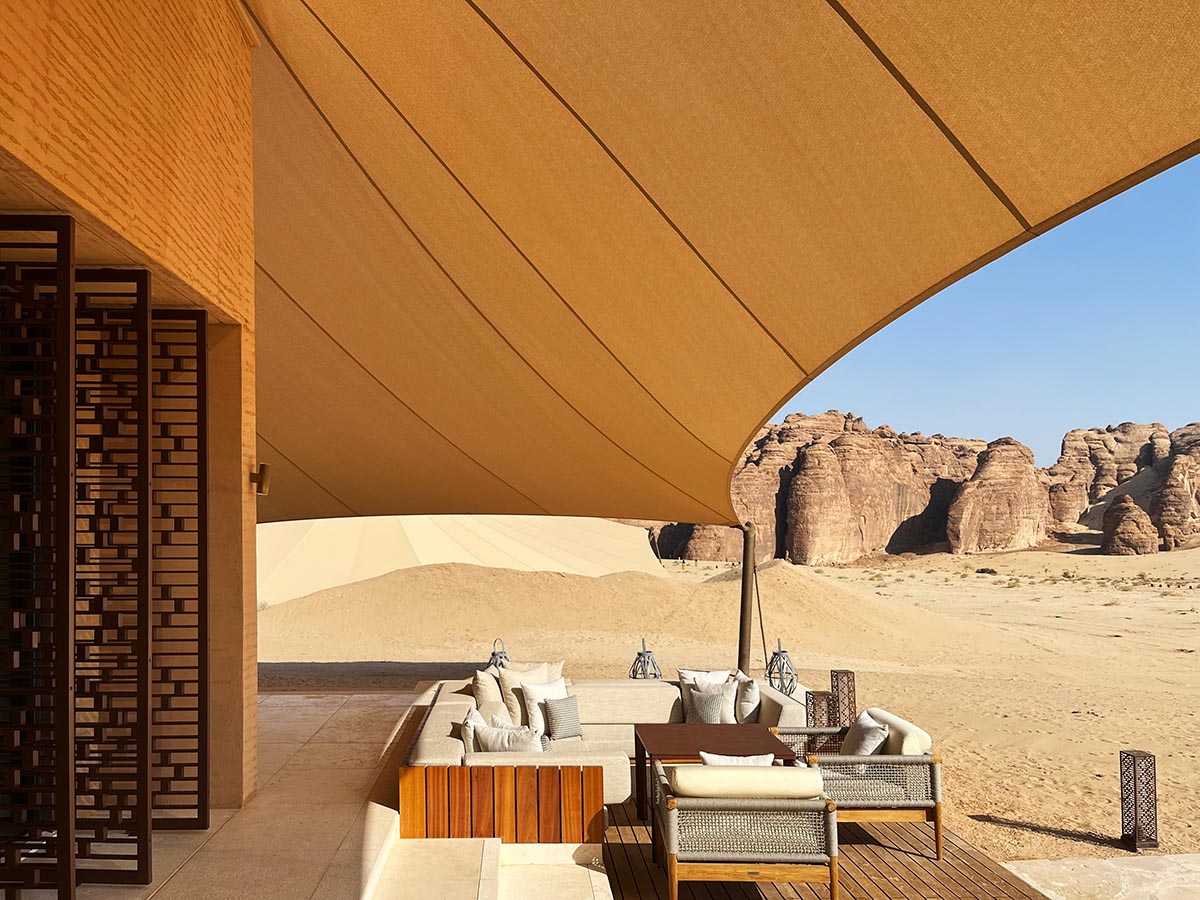
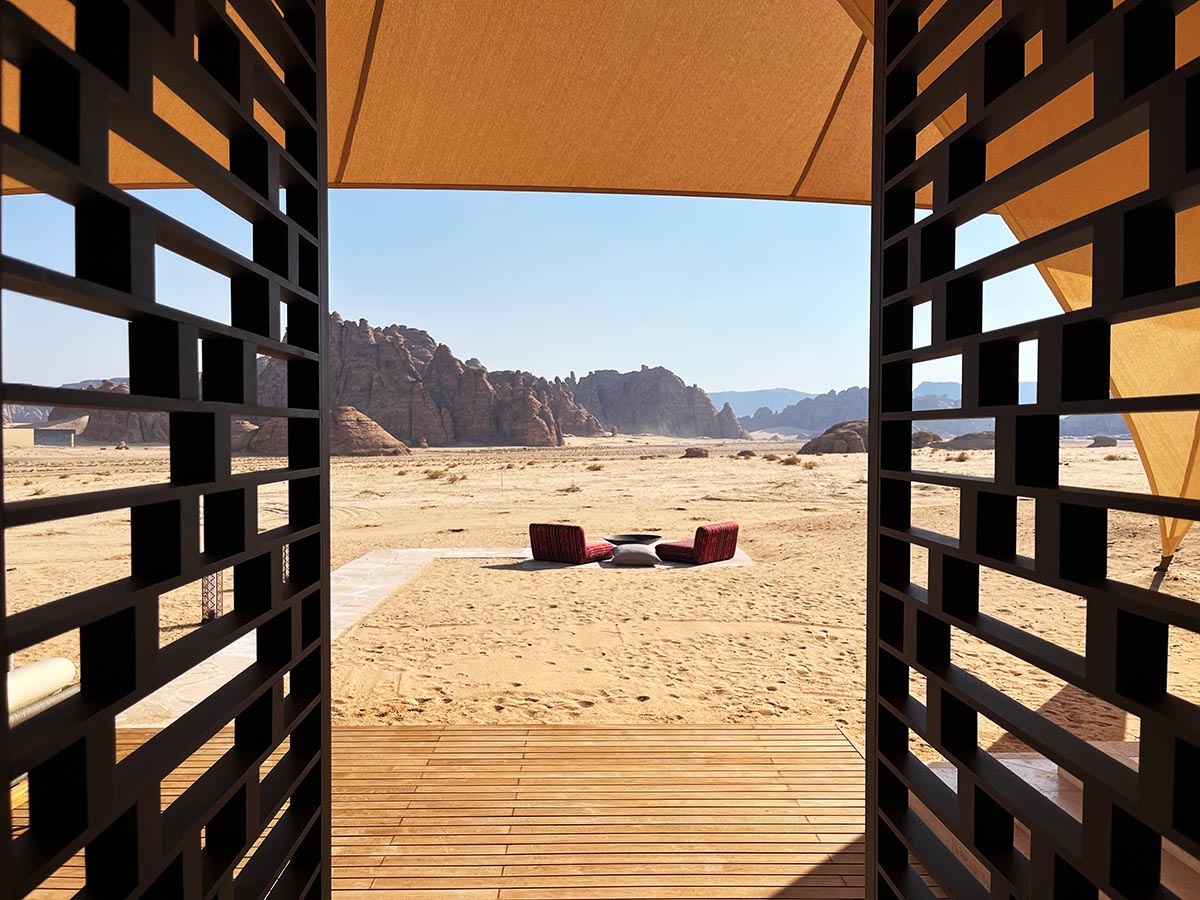
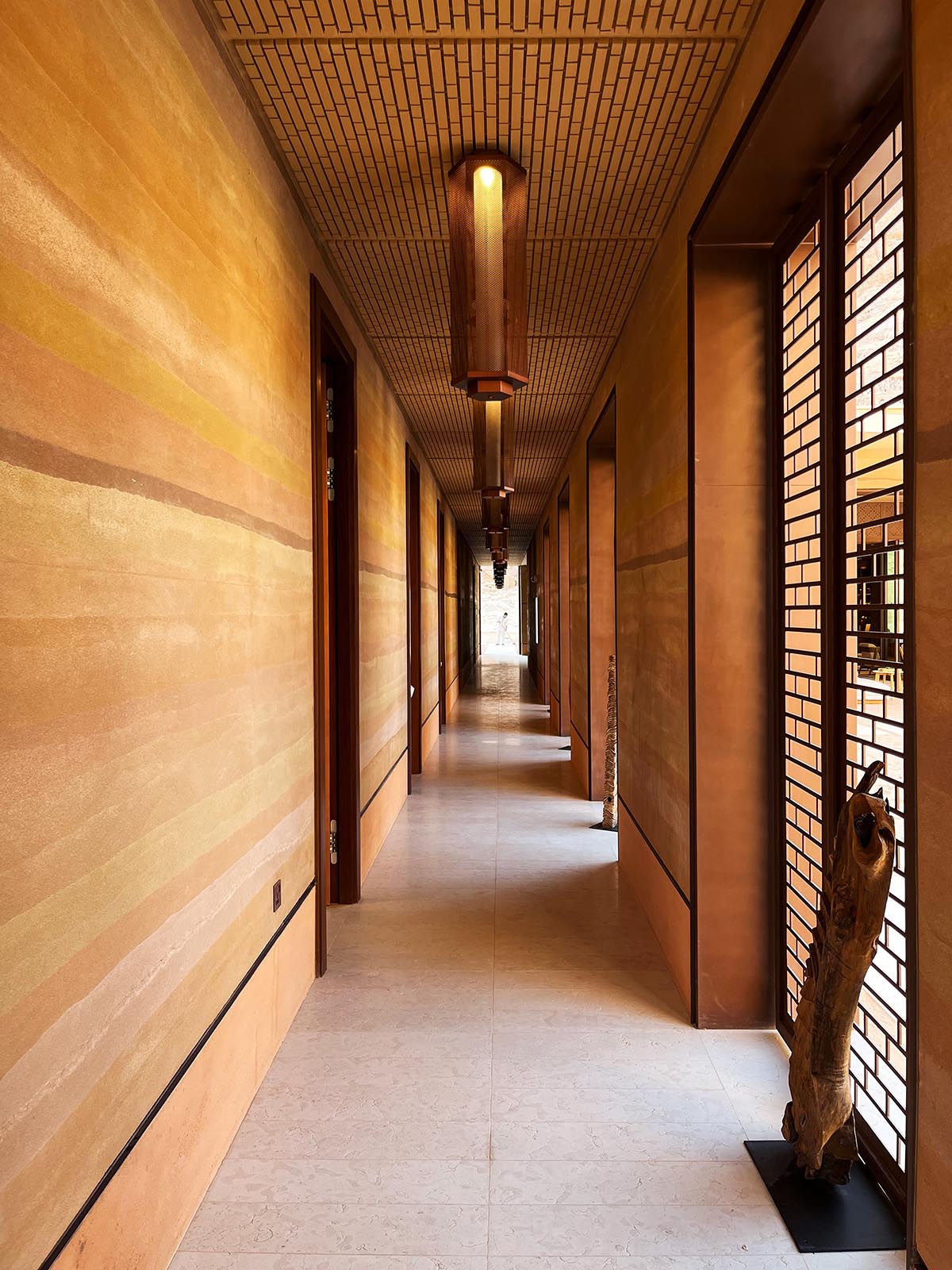

Project facts
Project name: Banyan Tree AlUla
Architects: AW²
Location: AlUla, Saudi Arabia
Surface Area: 10 000 sqm (site 3 046 ha)
Start Date: 2019
Hand Over Date: 2022
Masterplan, Architecture & Interiors: AW² architecture & interiors, Paris - Stéphanie Ledoux & Reda Amalou
Client: Royal Commission for AlUla (RCU) in partnership with AFALULA, French Agency for AlUla Development
Operator: Banyan Tree - Accor
Consultants / Project Management
GAJ, Architect of Record
AECOM, Project Manager
EGIS - GAJ, Structural & Civil Engineering
EGIS - GAJ, MEP Engineering
NESMA, Infrastructures.
Contractors
GCS – NESMA – DEEPA, General Contractors
FIOBCO, Tent Supplier
Accor Procurement – AH2, Furniture Supplier
All images courtesy of AW², Stéphanie Ledoux and Reda Amalou.
> via AW²
